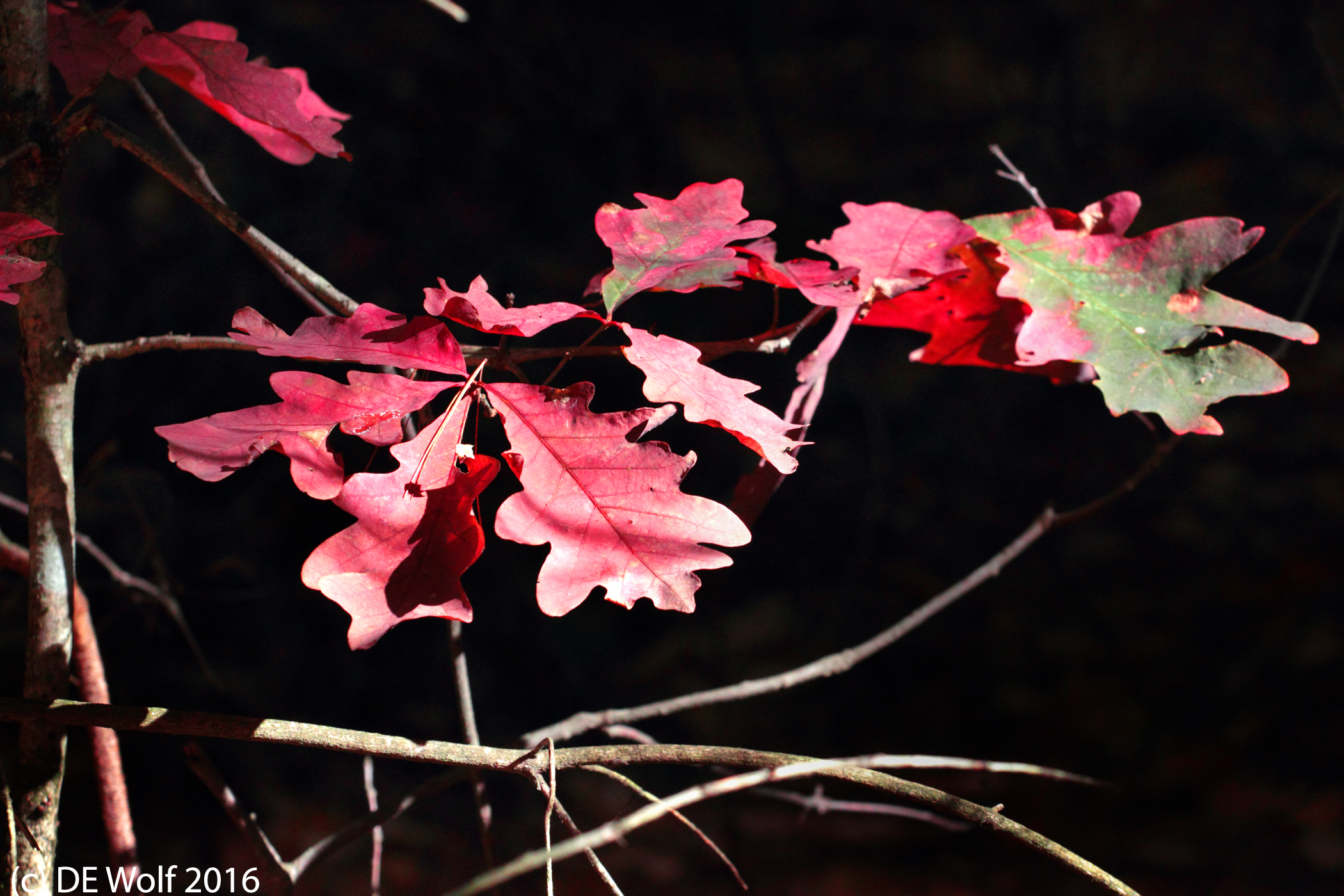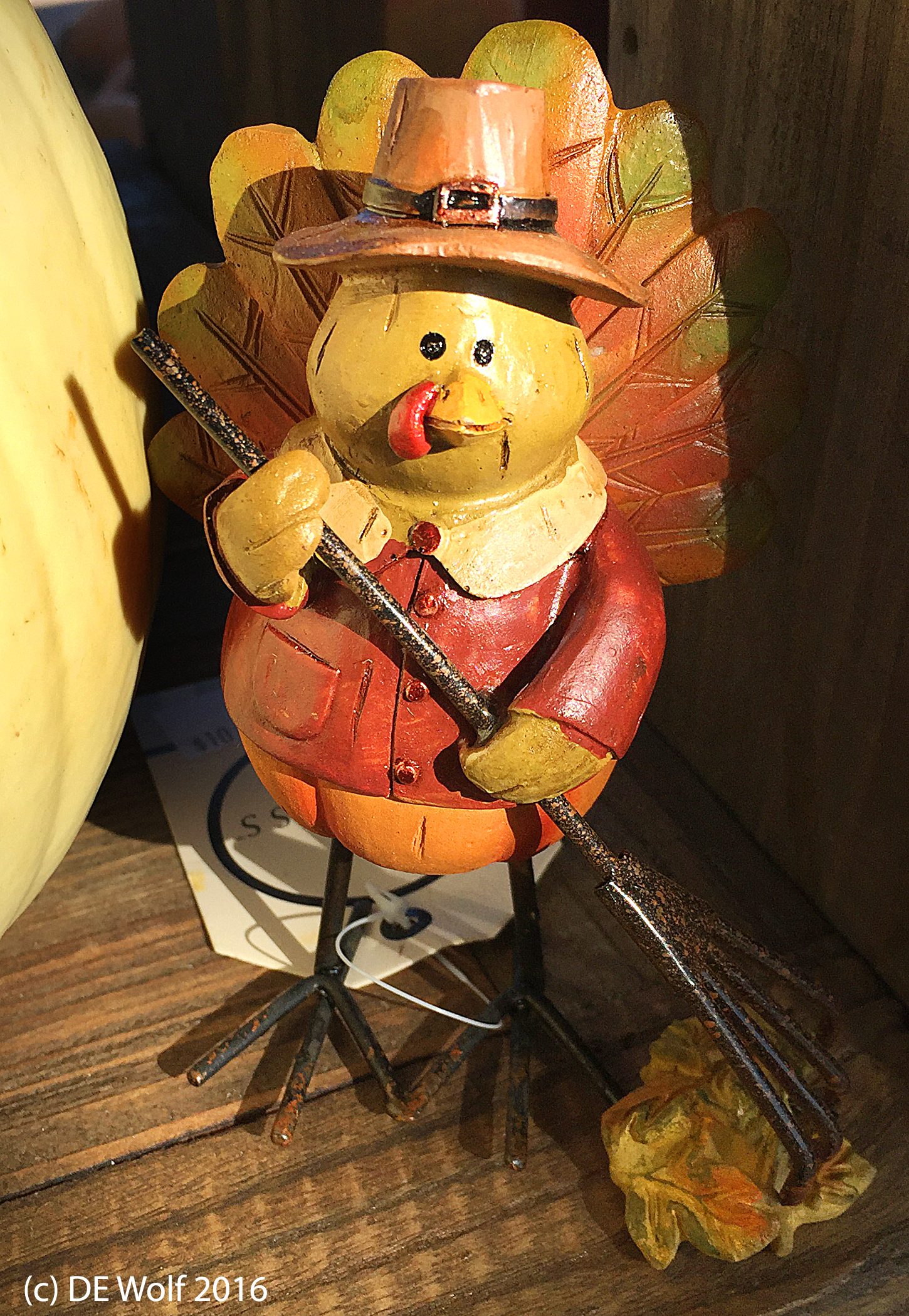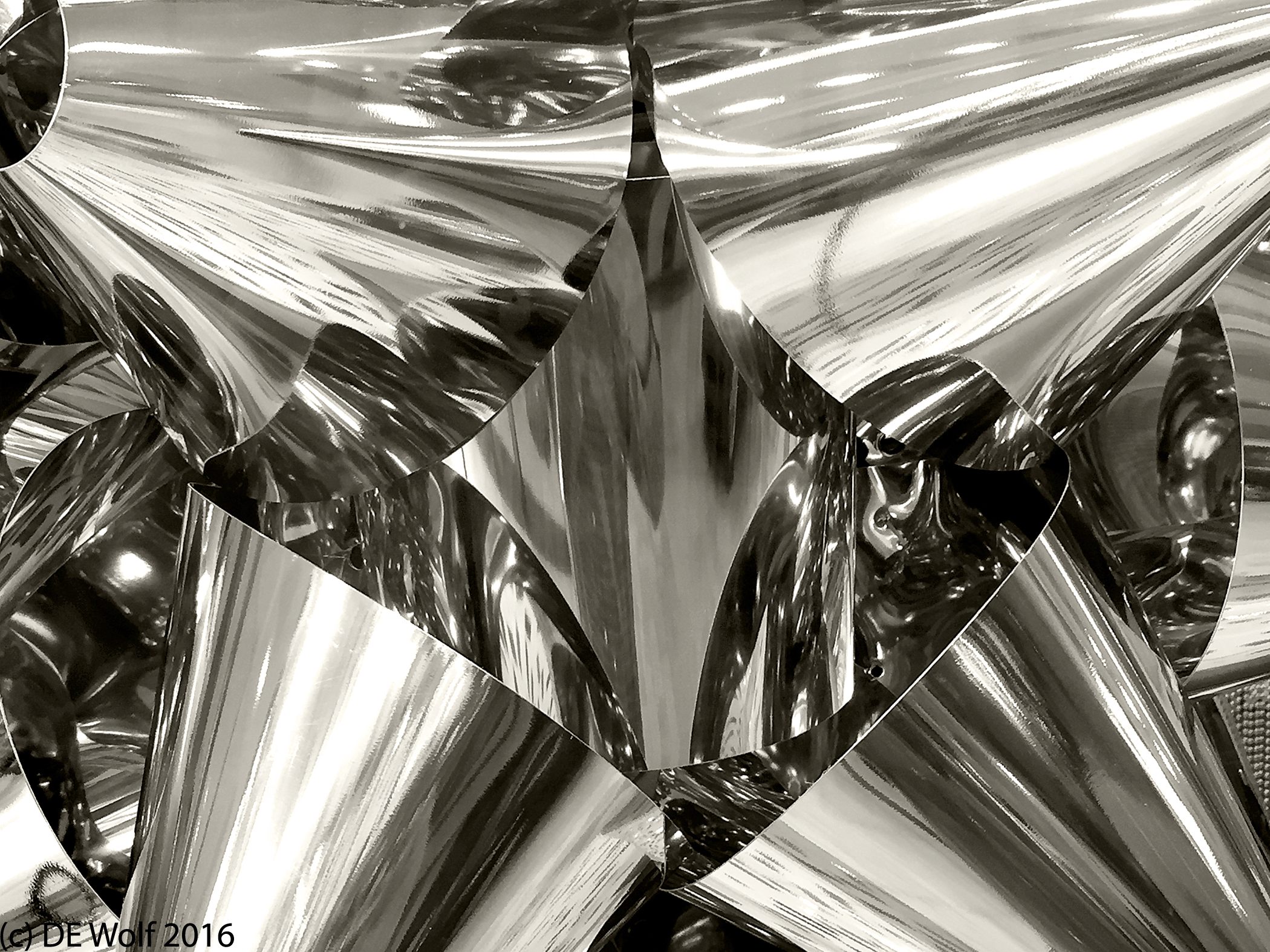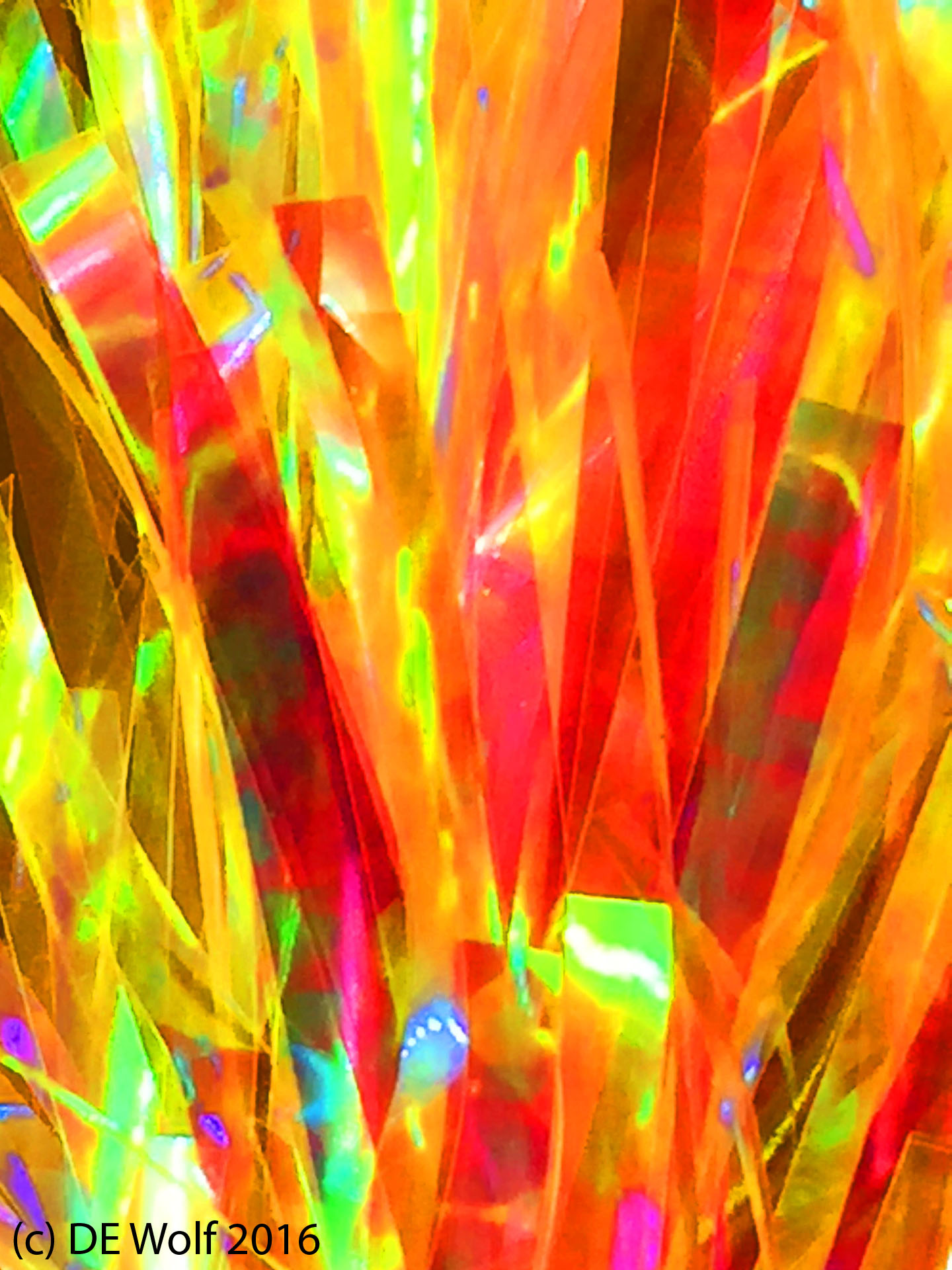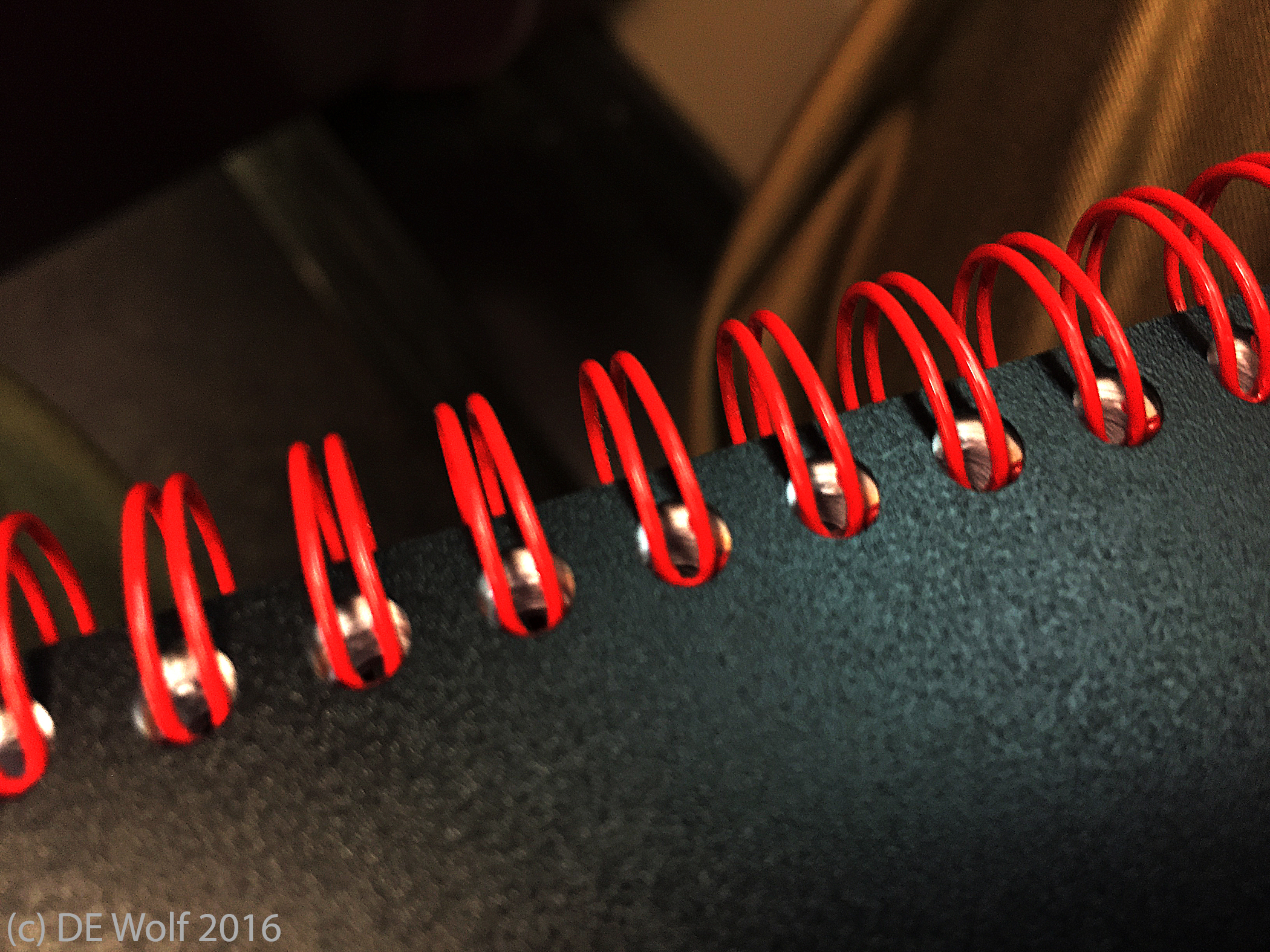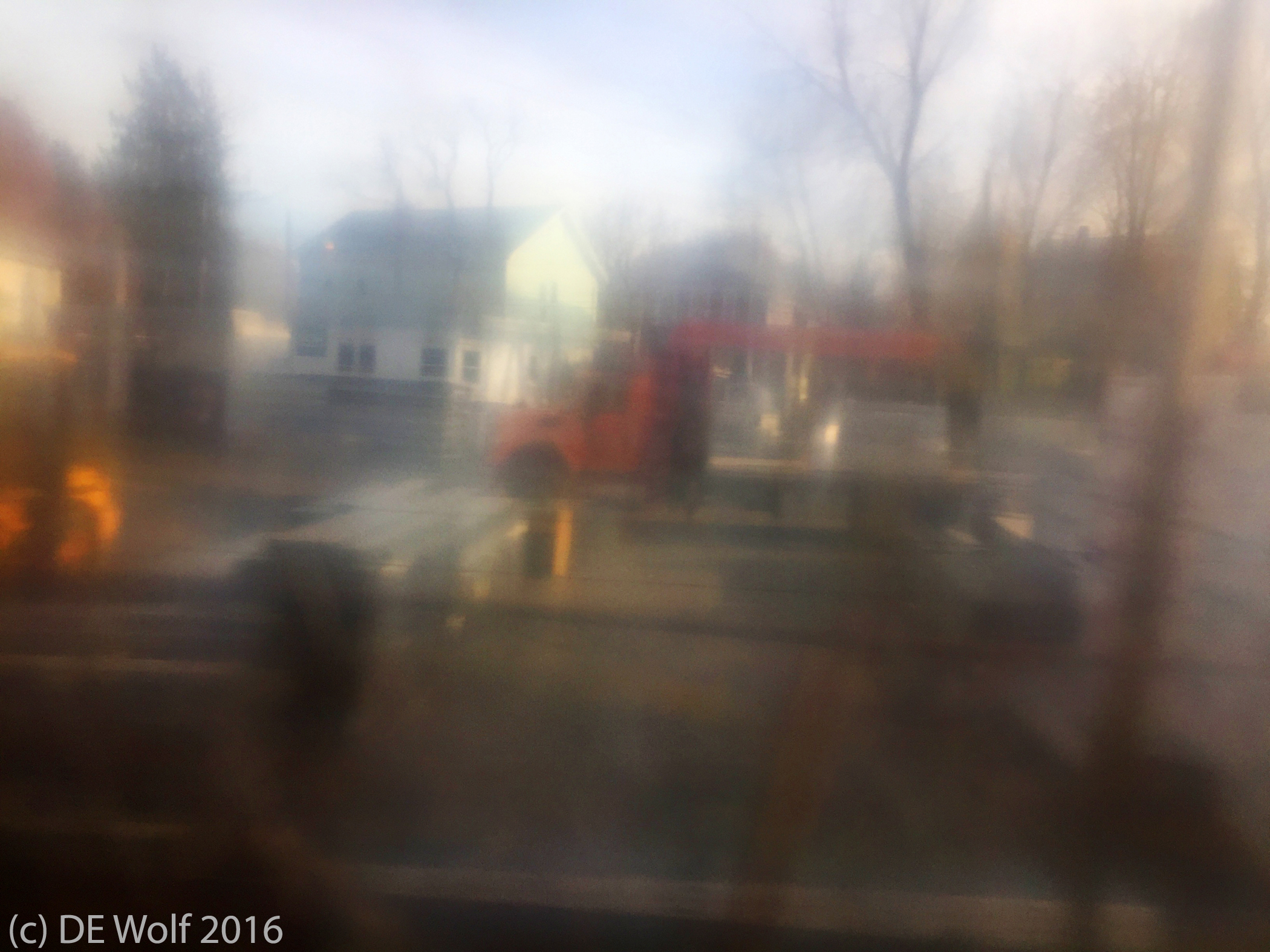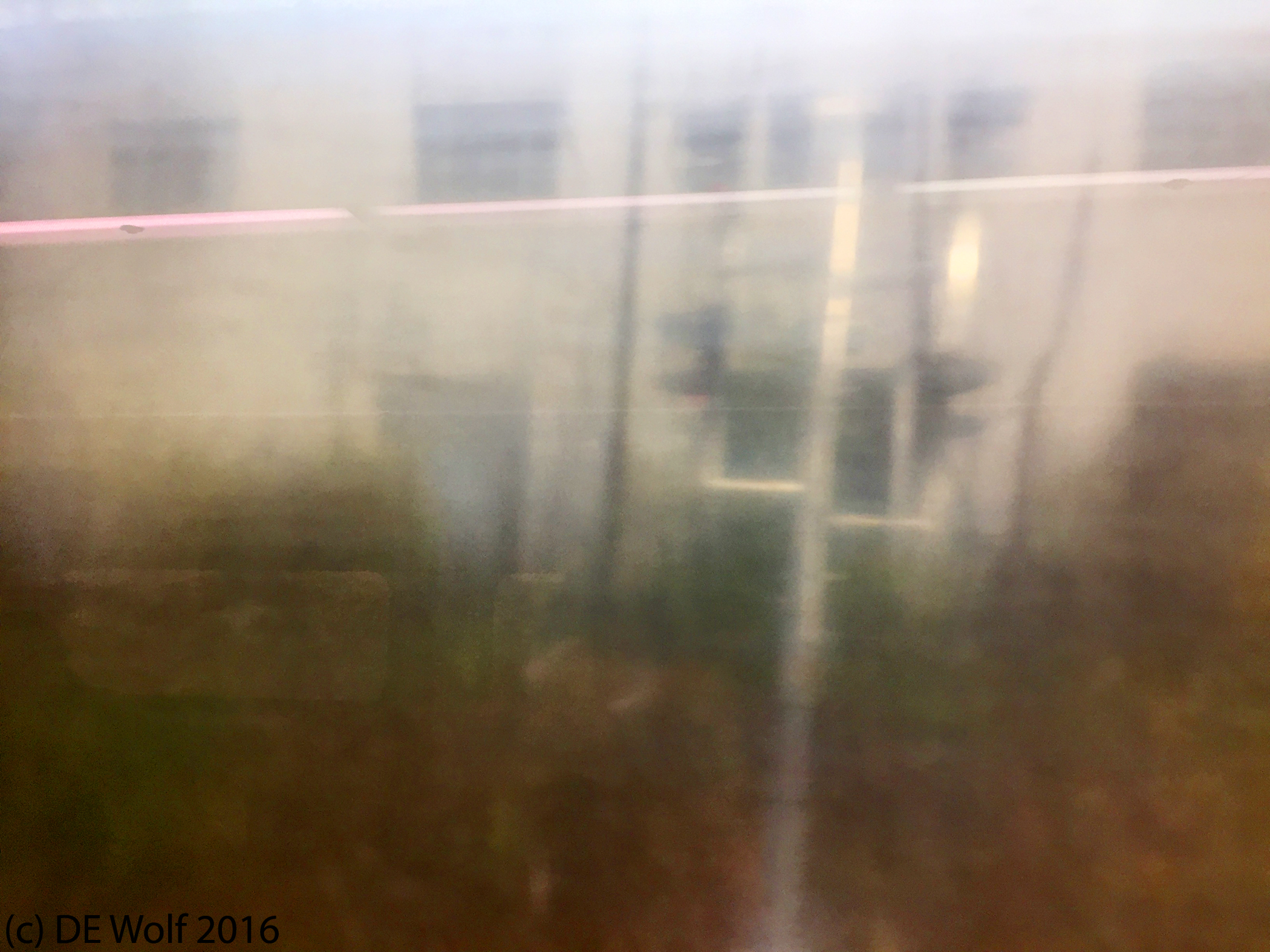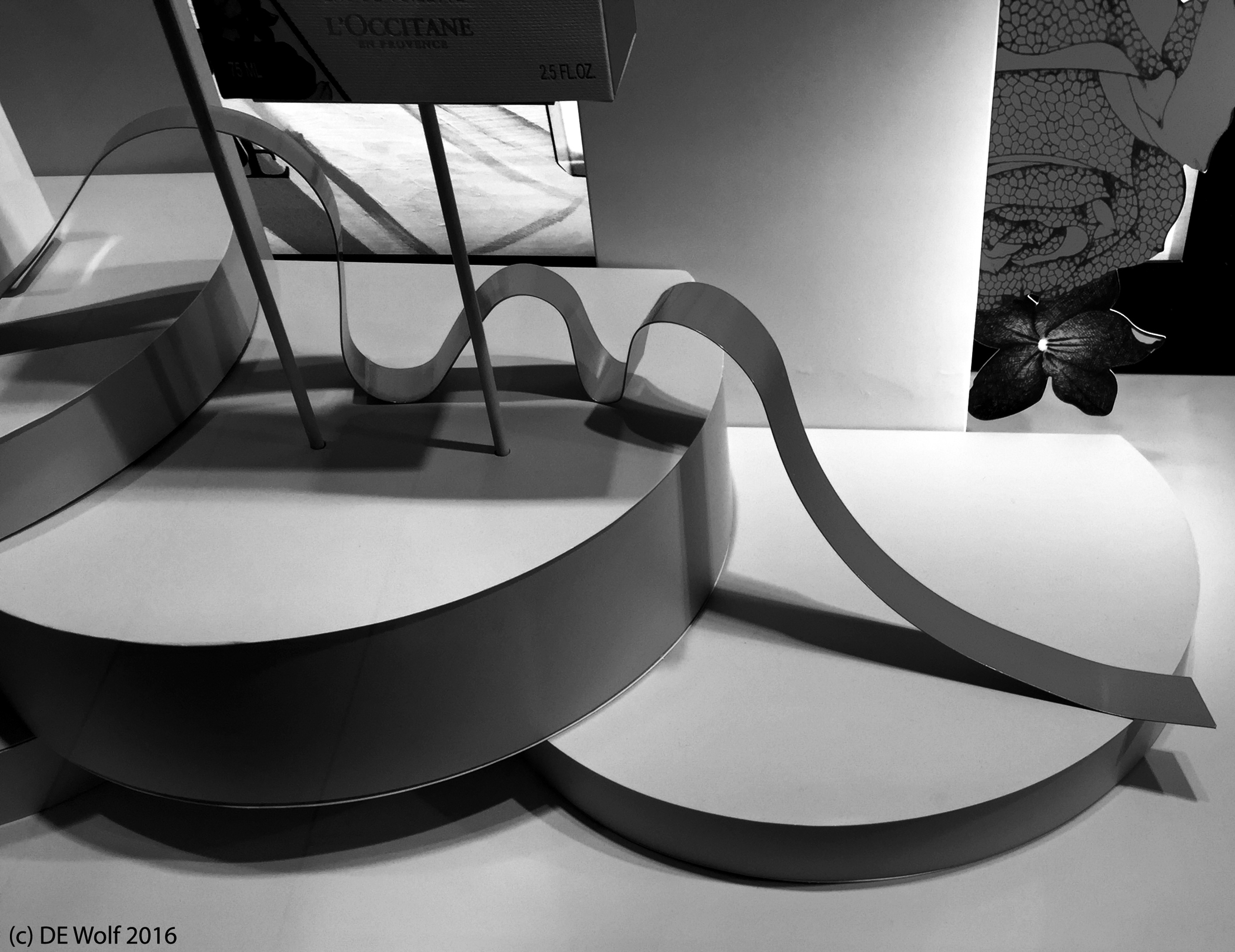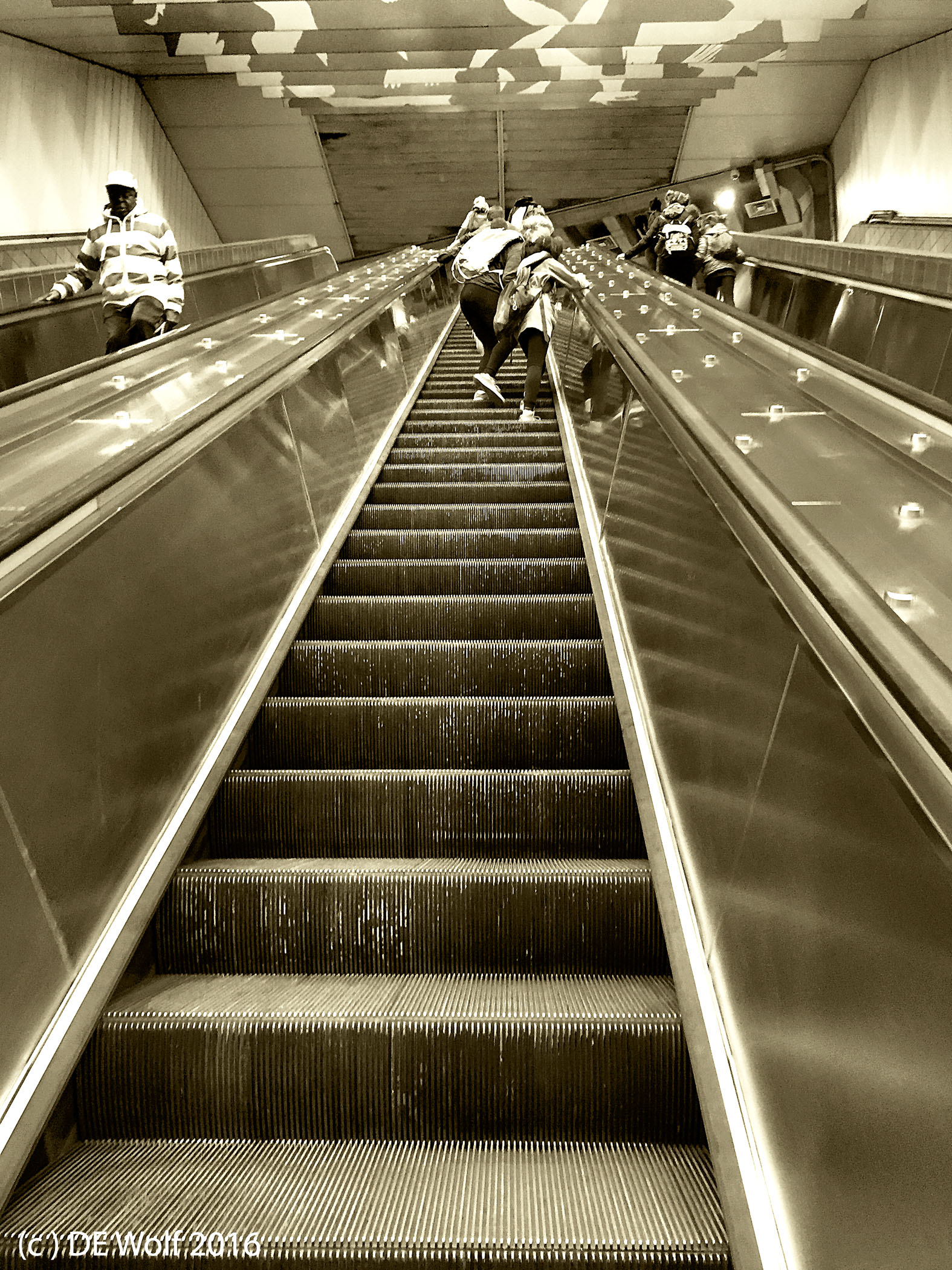
Figure 1 – IPhone photograph of the escalator at the Cambridge Porter Square Red Line MBTA stop. (c) DE Wolf 2016.
Figure 1 is a photograph that I took while riding up the escalator at the Porter Square MBTA stop in Cambridge, Massachusetts. Your alternative is to take the 199 step adjacent staircase. The longest span, the one shown, is 143 feet long. That’s 43.6 m.; so not anywhere near a record. The longest single-span escalator in the United States is at the Wheaton Station Stop on the Washington Metro Red Line, coming in at 230 feet or 70 m. The longest escalators in the world are installed in the Saint Petersburg Metro coming in at 449 feet or 137 m.
Arising from beneath the Earth in Cambridge, Massacchusetts the “Athens of America,” is instantly reminiscent of Dante rising at last from the depths of the underworld to once again see the stars.
“The Guide and I into that hidden road
Now entered, to return to the bright world;
And without care of having any rest
We mounted up, he first and I the second,
Till I beheld through a round aperture
Some of the beauteous things that Heaven doth bear;
Thence we came forth to rebehold the stars.“
While merely an IPhone photograph, I want this picture to be the kind that people look at 100 or 200 years hence, and say, “Oh how quaint! See the silly way people dressed and transported themselves a century or two ago.” So this raises two questions. First, is whether this is a transitional technology. Second, whether it is soon to be replaced by something better.
The first escalator was patented (U.S. Patent #25,076) on August 9, 1859 by Nathan Ames. There is no evidence that this device was ever built. In 1889, Leamon Souder successfully patented the “stairway,” but, again, it was never built. On March 15, 1892, Jesse W. Reno patented the “Endless Conveyor or Elevator.” Shortly after that, George A. Wheeler patented a moving staircase escalator. As for tangible reality, Reno built his first prototype and installed it alongside the Old Iron Pier at Coney Island, New York City in 1896. In 1895, Charles Seeberger who ultimately teamed with the Otis Elevator company began designing moving stair-based escalators similar to those patented by Wheeler in 1892. His first commercial escalator won the first prize at the Paris 1900 Exposition Universelle in France. All this means that escalators have been around for at least a century; so are not transitional technologies and are not likely to be replaced soon.
The question of what next is an interesting one. I do not hold my breath for transporter beams, as anyone who has had a call drop on their cell phone should agree. Star Trek’s Dr. Bones McCoy, on the transporter: I signed on this ship to practice medicine, not to have my atoms scattered back and forth across space by this gadget.” It was never quite clear what the writers of Star Trek wanted the transporter to be. However, there are certain issues of reality and the quantum mechanical paradox that you might not become who you are. It gives one pause. And while Star Trek writers tell us that this problem is fixed by “Heisenberg Compensators,” one’s gotta wonder.
So what is next? By definition we do not know. But at a future date, when we are nothing more than electrons captured in an array that defines an image, those who look at us will know and they will nod knowingly at our dogmatic quaintness.
